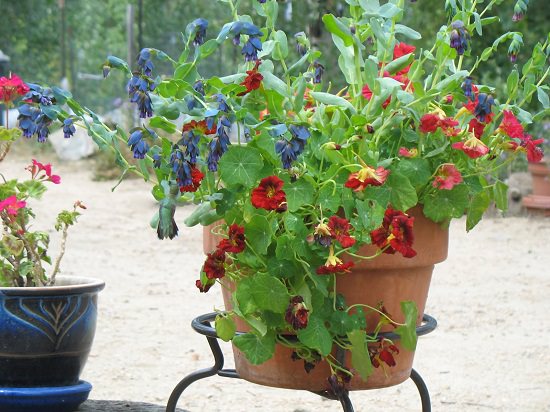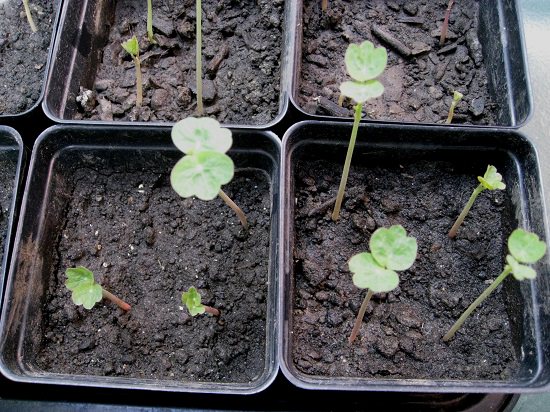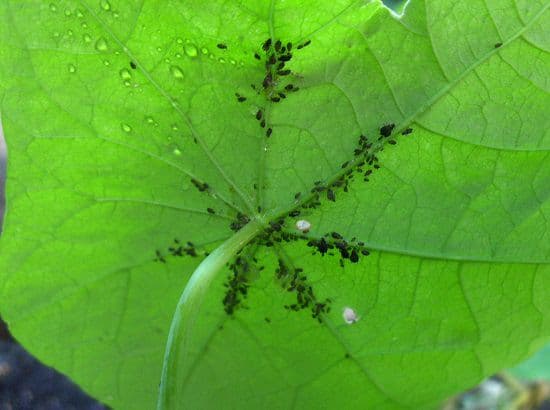Learn How to Grow Nasturtium in a Container to decorate your home with this colorful and fragrant plant that you can eat as well!
Nasturtiums are rich in many vitamins and minerals. Many people consider them weed, as they tend to be somewhat over-enthusiastic and spread quickly. If you plant them in a container you will have them fresh for culinary use. This way, you’ll be able to spare your garden from its notorious spread as well, by containing them in pots. Let’s see How to Grow Nasturtium in a Container!
Botanical Name: Tropaeolum majus
USDA Zones: 9 – 11
Difficulty: Moderate
Check out our article on growing Oregano in containers here!
How To Propagate Nasturtium
The most common and easy way to propagate nasturtiums is from seeds. You can get the seeds from a nearby nursery. There are many varieties of nasturtiums available such as bushy, trailing, and climbers.
Although you can plant all of these varieties in a container, the trailing plants are best suited for them. Plant a few seeds in the container and you are ready to go! It’s that easy! As nasturtium thrives on neglect the seeds are going to germinate on their own.
Note:
- Soaking nasturtium seeds overnight, before planting, will aid in germination.
- The seeds are not readily available. Once you get hold of this plant, store the seeds so that you can plant them again in the next spring.
Planting Time
To grow nasturtiums in containers, plant them four to six weeks before the last frost. As they start to flower early in the springs, this is going to give the plant ample time to grow. Keep the container indoors during frost and heavy wind. Once the last frost has passed, relocate the pot to a spot where the plant can receive sufficient sunlight.
If you live in a mild summer climate, you can grow them as annuals. Keep them away from prolonged exposure to the harsh sun. However, they grow only during the frost-free weather.
Requirements for Growing Nasturtium Plant
Pot Size
The ideal pot size to grow nasturtiums is 10-12 inches. As they are also excellent runners, you can easily grow them in window boxes as well.
Location
Nasturtiums require direct sunlight for optimum growth. However, do keep them protected from the harsh, afternoon sun. If you are growing them as houseplants, place them near an east-facing window, where they can get an ample amount of sunlight.
Soil
This marvelous plant does well in poor soil. You should plant them in loose, well-drained soil, and organic matter. Heavy and wet clayey soil should not be used for planting.
Tip: You can use a balanced organic fertilizer prior to planting them in containers.
Watering
Water nasturtiums only when the soil becomes dry. You can check this by scraping off the topsoil with nails. Watering the container once a week is generally sufficient. In hot summers you can water twice a week. Avoid watering at night, as nasturtium can develop molds if the soil remains moist for a prolonged period.
Pests and Diseases
Aphids, cucumber beetles, cabbage butterflies, and other common garden pests love to attack nasturtiums. In fact, because of its potency to attract aphids, it is used as a trap crop by many gardeners. Also, dead leaves provide shelter for such harmful insects.
Spraying the plant with pressure water spray will get rid of aphids and other pests easily. You can also pick up the insects manually with your hands and drop them in a soapy solution. Using neem oil, diluted with water, helps in keeping the pests at bay.
Deadheading
Deadheading is the process of removing dead and decayed parts of the plant. It prolongs the flowering period, encourages healthy new growth. Although deadheading is not that necessary for nasturtiums, there is no harm in trying it.
Harvesting
The entire nasturtium is edible, starting from the leaves to flowers to the seeds. Use any sharp object to cut off the part required. Avoid taking too much from a single plant, as it can hinder growth. Leaves of nasturtium have a peppery taste, whereas the flowers have a little sweet and spicy flavor. You can use the petals and leaves in a mixed green salad or many other recipes!









My nasturtium are leggy and the leaves are withered,,,they were great in the sunroom but once outside they died back fast,,,,is there anything I can do to get them to grow better? Thank you